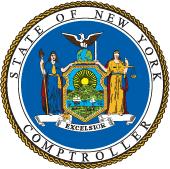Overview
Your estimated invoice is provided in July for informational purposes and approximates your final annual invoice. If you have the Billing Security Role, we notify you when your estimated invoice is available in Retirement Online.
Please do not send payment for your estimated invoice. You will receive your final annual invoice in November. Payment will be due by February 1, 2026, or you will have the option to pay a discounted prepayment amount by December 15, 2025. (Note: Since the February 1, 2026 due date falls on a Sunday, your due date will be the next business day, February 2, 2026. We will provide detailed instructions with your invoice in November.)
Viewing Your Estimated Invoice
- Sign in to Retirement Online.
- From Account Homepage, click Access Billing Dashboard button.
- After choosing location code and retirement system (ERS or PFRS), click Estimated Invoice link.
Only employees with the Billing Security Role are able to access the Billing Dashboard. Your Security Administrator assigns this role to contacts who need to view billing information.
Understanding Your Estimated Invoice
Your estimated invoice is calculated using the employee earnings reported to NYSLRS by your organization during State Fiscal Year April 1, 2024–March 31, 2025 (SFY 2024–25). To view the Fiscal Year Earnings used to calculate your invoice, click the Billed Data link on the Billing Dashboard.
Plan ID and Options
Plan ID refers to the retirement plan.
Options are additional benefits beyond those offered in the standard plans, which you chose to provide to your employees. For example, options 41J and 341J refer to Sections 41(j) and 341(j) of the Retirement and Social Security Law (RSSL), which allow members to receive additional service credit for their unused, unpaid sick leave at retirement.
Salary, Rate and Regular Plan Contribution
For each retirement plan (Plan ID) and the additional benefits offered (Options):
- The Salary refers to the earnings reported for your employees.
- The Rate refers to the actuarially determined cost shown as percentage.
- The Regular Pension Contribution refers to the amount you're required to pay and is calculated by multiplying the Salary by the Rate.
Employer contribution rates are set annually to ensure proper funding for the Common Retirement Fund which pays for your employees’ retirement benefits. Rates for each retirement system are broken down by tier, plan and option.
- SFY 2024-25 and SFY 2025-26 Rates for the Employees’ Retirement System
- SFY 2024-25 and SFY 2025-26 Rates for the Police and Fire Retirement System
Group Term Life Insurance (GTLI)
The cost of GTLI, which provides ordinary death benefits for your employees, is listed separate from the Regular Pension Contribution because it is excluded from the calculation of the amount to amortize.
Adjustments and Installments
Adjustments represent charges or credits associated with the current or previous fiscal years.
- Adjustments to earnings for SFY 2024-25 must have been submitted by May 31 to be included in your invoice.
- Adjustments to earnings for previous fiscal years, known as Prior Years’ Adjustments, must have been submitted by March 31 to be included in your invoice.
Installments include amortization payments, past service costs and deficiency contributions.
Divide-by Factor
The Divide-by-Factor represents the 45 days of interest you will save if you pay your annual invoice by December 15, 2025, instead of February 1, 2026. The amount changes with the interest rate.
When Graded Payments are Required or When You Can Amortize
The Contribution Stabilization Program (CSP) and Alternate Contribution Stabilization Program are optional programs, which allow you to pay a portion of your annual invoice when due and pay the remainder over time with interest.
These programs use a graded contribution rate system. Each year, NYSLRS (the System) establishes graded rates: the System average rate and the System graded rate.
As the System average rate trends upward or downward, the System graded rate follows.
- Under the CSP, the System graded rate may change by up to 1 percent.
- Under the Alternate Program, the system graded rate may change by up to 0.5 percent.
NYSLRS uses the System graded rate to determine the employer’s graded rate which is then compared to their normal annual contribution rate to determine whether they are required to make a graded payment or eligible to amortize.
When the employer’s normal annual contribution rate is lower than their graded rate, the employer is required to make a graded payment to offset future increases in their graded rate. In this circumstance, your invoice provides the required Employer Graded Payment under the Adjustments section. This payment is applied to any outstanding amortizations (oldest to newest) and any remaining funds are deposited into your Reserve Fund, which earns interest.
When the employer’s normal annual contribution rate is higher than their graded rate, the employer is eligible to amortize a portion of their invoice. In this circumstance, your invoice provides the maximum amount you may amortize, less the amount of your Reserve Fund, which is automatically applied as if you had amortized that amount. The amount applied from your Reserve Fund also reduces the total amount due and appears on your invoice as a CSP Chap 57 Reserve Fund Credit. If your Reserve Fund balance was more than the amount applied to your invoice, you will have money left over in your Reserve Fund.
To view your updated Reserve Fund balance, click the Reserve Fund Balance link on the Billing Dashboard. Your invoice does not provide this information.
If You Need Help
If you have questions about your estimated invoice or for help accessing Retirement Online, use our help desk form (select Employer Billing or Retirement Online Troubleshooting from the dropdown).
You can also call 866-805-0990 (press 1 to access the employer menu, then follow the prompts).
Rev. 7/25

